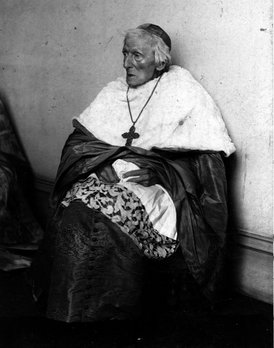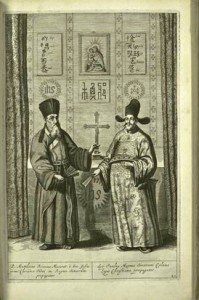 The process of canonization has begun, as many know, of Francis Xavier Cardinal Nguyên Van Thuán. The cardinal’s reputation of holiness was born through his virtue and the crucible of suffering in prison for 13 years, 9 of them in solitary confinement. His is a true to witness to hope for us today.
The process of canonization has begun, as many know, of Francis Xavier Cardinal Nguyên Van Thuán. The cardinal’s reputation of holiness was born through his virtue and the crucible of suffering in prison for 13 years, 9 of them in solitary confinement. His is a true to witness to hope for us today.
Pope Benedict twice referred to Cardinal Van Thuán in his 2007 encyclical, Spe Salvi, where spoke about the way the cardinal faced hopelessness. The Pope said of Van Thuán ought to be a challenge to us: “the fact that he could listen and speak to God became for him an increasing power of hope, which enabled him, after his release, to become for people all over the world a witness to hope –to that great hope which does not wane even in the nights of solitude” (32).
Van Thuán was a priest for 49 years, a bishop for 35 and a cardinal of the Roman Church for a year and a half. When he came to Rome Pope John Paul II appointed him the president of the Pontifical Council for Justice and Peace.
Cardinal Francis Xavier Cardinal Nguyên Van Thuán died on September 16, 2002, at 74 years old. The Congregation of Saints allowed the process of canonization to proceed in 2007 and the cause is currently be studied. It is reported that several miracles are claimed or credited to the intercession of Cardinal Francis Xavier Cardinal Nguyên Van Thuán.
When Cardinal Van Thuán is canonized he will be the first Vietnamese saints since the martyrs of Vietnam. A great spiritual honor for the people of Viêt Nam, a beacon of hope.
Books by Francis Xavier Cardinal Nguyên Van Thuán:
Testimony of Hope: The Spiritual Exercises of Pope John Paul II (2000)
The Road of Hope: A Gospel from Prison (2001)
Prayers of Hope, Words of Courage (2002)
Five Loaves & Two Fish (2003)
- Rome Reports TV News Agency did a video presentation in early November on the cardinal with a brief interview with his sister, Tien Thérèse, giving good insights into the person of His Eminence. See the video here.
- The official website for the cardinal is located here.
- Recent news on Cardinal Van Thuán can be read here.
Prayer for the Beatification of Francis Xavier Cardinal Nguyên Van Thuán
O mighty and eternal God, Father, Son and Holy Spirit I offer thanks for giving to the Church the heroic testimony of Cardinal Francis Xavier Nguyên Van Thuân. The suffering he experienced in prison, which he united with the crucified Christ and commended to the maternal protection of Mary, is for the Church and the world a shining witness of unity and forgiveness, and of justice and peace. His loving person and his Episcopal ministry radiate the light of faith, the
enthusiasm of hope and the warmth of love. Now, my Lord, through his
intercession and according to your will, grant me the grace I am imploring in the hope that he will soon be elevated to the honour of sainthood.
Imprimatur given in Rome
Giampaolo Crepaldi
Archbishop-Secretary, Pontifical Council for Justice and Peace
September 16, 2007









